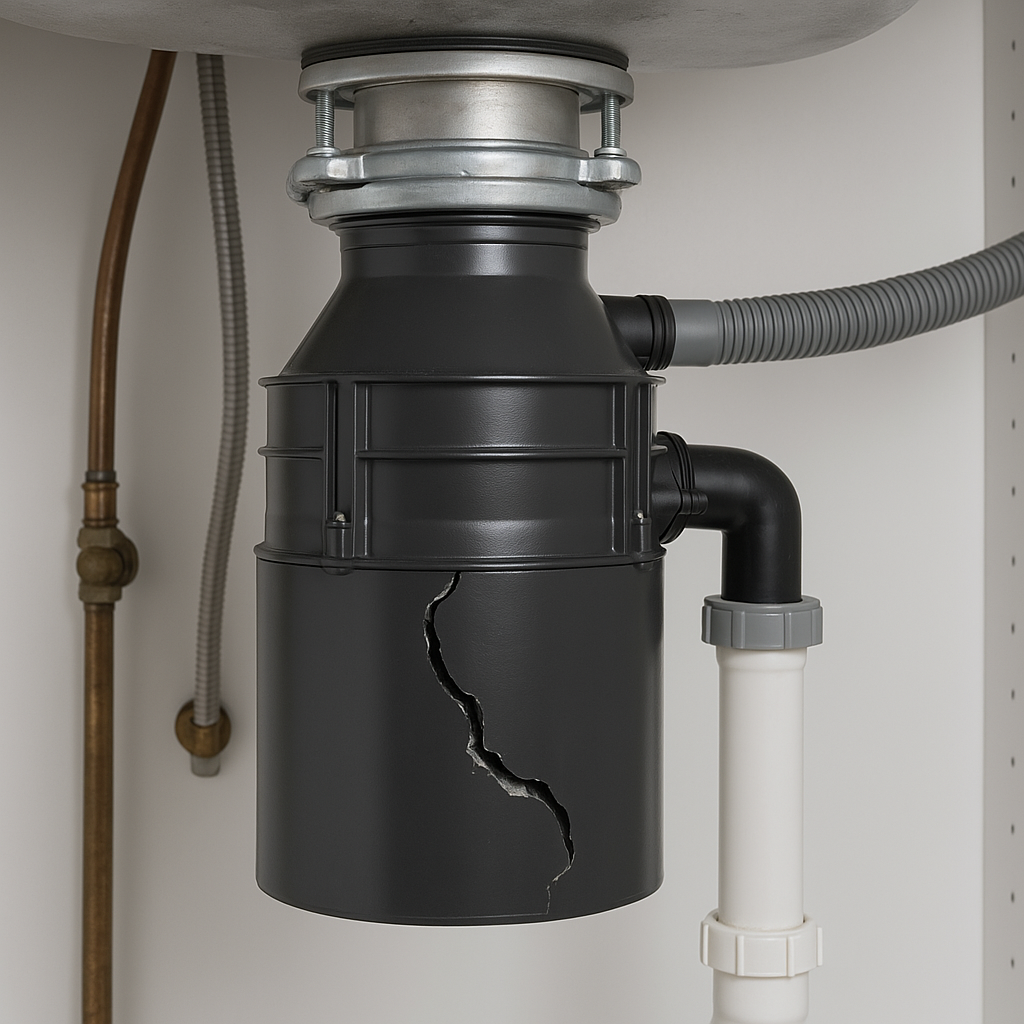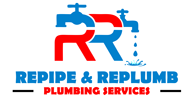
Common Garbage Disposal Repairs
Disposal Won’t Turn On
If your garbage disposal isn’t powering on, don’t panic just yet. It could be something simple like a loose connection or a tripped breaker.
Safety first: Never attempt repairs while the unit is plugged in. Always turn off the power at the source to avoid injury.
Here are a few quick checks:
Ensure the power cord is firmly plugged in.
Press the reset button (typically red and located on the bottom of the unit).
Check your home’s circuit breaker—if it tripped, flip it off and on again.
If it still won’t start, or if the unit is hardwired, call in a licensed technician for an inspection.
Jammed Garbage Disposal
If the unit is humming but the blades aren’t turning, it might be jammed.
Use an Allen wrench in the socket at the bottom of the unit to gently rotate the motor shaft.
If there’s no socket, you can carefully use a wooden spoon handle from above to move the blades.
Avoid turning the entire unit or applying too much force, as that may damage internal seals.
Reminder: Never stick your hands into the disposal, even if the power is off.
If the jam persists, it’s best to contact a professional plumber to prevent further damage.
Slow-Draining Disposal
A slow-draining sink can be caused by buildup in the disposal or the attached pipes. This buildup can cause odors and interfere with normal kitchen routines.
Often, the issue lies in the P-trap (the U-shaped pipe under your sink), which may need cleaning.
To avoid clogs, do not put these items down your disposal:
Cooking oil or grease
Pasta, rice, or oatmeal
Fibrous vegetables like celery
Fruit peels or rinds
Hard waste like shells or pits
Is your garbage disposal acting up? While these units are built to last and generally need very little upkeep, issues can still pop up—and when they do, they can be a real nuisance.
A malfunctioning garbage disposal can lead to clogged sinks, unpleasant smells, and even water leaks. In this guide, we’ll walk you through some common garbage disposal problems, what you can try before calling a professional, and when it might be time to replace the unit altogether.

When to Replace Your Garbage Disposal
Leaking Disposal
Leaks can come from multiple places. Depending on where the water is dripping from, you might need to replace the unit entirely.
Top leak: Likely a bad sink flange or worn-out seal.
Side leak: Usually from a loose or damaged drainpipe connection.
Bottom leak: Indicates internal damage—replacement is often the only solution.
Old Disposal
If your disposal is 8+ years old and constantly jamming, leaking, or running noisily, it may be time for an upgrade. Old units can rust internally and are more likely to break down suddenly.
Garbage Disposal Installation Services
Don’t let a faulty disposal slow you down. Whether you need a repair or a full replacement, our licensed plumbers can handle the job efficiently and affordably.
What’s Included:
- Full inspection of your garbage disposal and plumbing
- Repairs when possible
- Removal of the old unit and professional installation of a new one
- Cleanup and disposal of all replaced parts
How Long Does a Garbage Disposal Last?
Most modern garbage disposals last 8 to 10 years, depending on usage and care. High-quality models combined with proper maintenance can even last longer.
The Different Styles of Tubs to Install
Not sure what style suits your space? Consider these options:
Alcove Tubs: Space-saving, fits between three walls.
Clawfoot Tubs: Freestanding, antique-inspired, ideal for soaking.
Standalone Tubs: Modern, no wall attachment, easy to install.
Corner Tubs: 5-sided, often jet-equipped, great for master bathrooms.
Drop-In Tubs: Installed within a platform; only the basin is visible.
Walk-In Tubs: Accessible for seniors or those with mobility needs; includes handles, seats, and footholds.
Maintenance Tips for Your Garbage Disposal
Run it regularly: Even if you don’t use it often, run the disposal with cold water to keep it from rusting or seizing up.
Avoid chemical cleaners: Harsh drain cleaners can erode plumbing and seals. Use a mix of baking soda and vinegar instead for a safer clean.
Neutralize odors naturally: Toss in some lemon peels and run warm water to freshen up the unit.
Never dispose of these items:
- Coffee grounds
- Pasta, rice, or oatmeal
- Eggshells
- Banana or potato peels
- Bones, plastics, or pits
- Shells from seafood
More Plumbing Services in Houston
We offer a wide range of plumbing services beyond garbage disposal repair, including:
Leak detection and repair
Sink installation and maintenance
Bathtub and shower repairs
Full-service plumbing solutions
Visit our main plumbing page for the complete list of services.
Choosing the Right Plumber in Houston
When selecting a plumber in Houston, consider the following:
- Experience and qualifications: Ensure the plumber is licensed and experienced in handling your specific plumbing needs.
- Reputation: Check online reviews and ask for references to gauge the plumber’s reliability and quality of work.
- Estimates and pricing: Obtain multiple estimates to compare costs and ensure you receive a fair price for the services required.
Conclusion
Plumbing services are an integral part of maintaining a functional and safe home in Houston. Understanding the costs associated with various services can help you plan and budget effectively. Whether you need a simple repair or a full system overhaul, choosing the right plumber can make all the difference in ensuring quality and efficiency. By staying informed about your options and costs, you can make the best decisions for your home or business’s plumbing needs.
Contact Us for More Information
